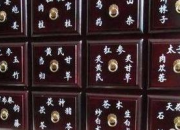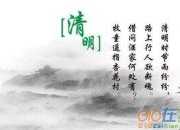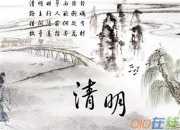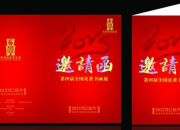彭蒙惠英语:令人惊喜的旧金山(原文)
时间:2021-08-31Surprising San Francisco
令人惊喜的旧金山(2/3)
Surprising San Francisco
Modern San Francisco revives some old sights that will delight even the sorest eyes
San Francisco’s Coit Tower: a beacon with a past
“One more. Squeeze in, one more,” chanted the elevator’s operator as almost a dozen tourists squished into the old-fashioned elevator for the slow, clanking ascent up Coit Tower.
At the top of the 210-foot-tall tower, we spilled out onto a viewing platform for a jaw-dropping panorama of San Francisco. For visitors to Coit Tower, the 360-degree view is the big draw. Yet what’s inside is as compelling as the views. The ground-floor lobby is ringed by dozens of striking, 10-foot-tall murals. Painted by 26 artists in a realist style and completed in 1934, they portray California life during the Depression years.
Miss Lil
Coit Tower, which sits atop the narrow Telegraph Hill in northeast San Francisco, was built in 1933, and commemorates one of San Francisco’s more eccentric citizens, Lillie Hitchcock Coit, and the city’s fire department.
Legend has it that a teenage Lillie, who was born in 1843, was walking home from school one afternoon and came across the short-handed firemen of the Knickerbocker Engine Co. No.5 struggling to haul their engine up Telegraph Hill to a fire. She raced to help, pulling on the towrope and exhorting bystanders to pitch in. They did, and Engine Co. No. 5 surged up the hill, ahead of other engines, to put out the fire.
Miss Lil, as she was known, became a lifelong fan of No. 5, visiting with the firemen, and wearing an honorary bejeweled fireman’s badge until her death in 1929.
Though she roamed the world and settled in Paris, she left her heart in San Francisco, bequeathing money to the city to beautify it with a memorial.
The city decided on Coit Tower, building the white concrete tower on 300-foot-tall Telegraph Hill. To many, the tower resembles the nozzle of an old-fashioned fire hose, recalling Miss Lil’s fondness for the fire engines and firemen.
Specialized Terms
Beacon (n) 地标;灵感来源 a source of inspiration
Depression (n) 20世纪30年代笼罩全球的经济大萧条 a time period during the 1930s when there was a worldwide economic depression and mass unemployment
Towrope (n) 拖曳缆绳 a rope which a vehicle uses to pull another vehicle
Bequeath (v) 遗赠 to arrange to give money or property to others after one’s death
Nozzle (n) (水管的)喷嘴 a narrow piece fixed to the end of a hose so that the liquid that comes out can be directed in a particular way
Vocabulary Focus
Chant (v) sing or shout (sth) rhythmically and repeatedly
Squish (v) to squeeze or crush together or into a flat mass; squash
Clank (v) dull metallic sound (as) of chains striking together
Jaw-dropping (adj) amazing; astonishing
Panorama (n) view of a wide area
Draw (n) something that a lot of people are interested in
Mural (n) 壁画
Eccentric (adj) strange or unusual, sometimes in an amusing way
Exhort (v) advise sb strongly or earnestly; urge sb
Pitch in (v) to start to do something helpful as part of a group
Surge (v) move forward in or like waves
Badge (n) 徽章
Concrete (n) 混凝土
Discussion Question
Do you prefer to visit old-fashioned buildings? Why or why not?
Extra Exercise
1. Translate the following sentence into Chinese, ‘She raced to help, pulling on the towrope and exhorting bystanders to pitch in.’
2. According to the recording, what vehicle did people use in1843 to pull engines?











